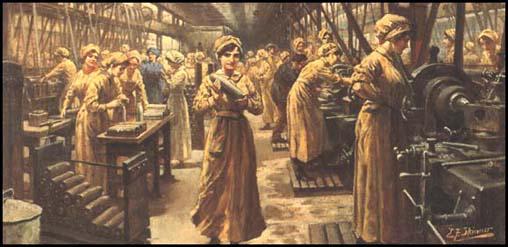Munitionettes
In the early stages of the First World War the British munitions industry had great difficulty producing the weapons and ammunition needed by the armed forces. In 1915 the government passed the Munitions of War Act that gave it the power to take direct control of the industry. David Lloyd George, Minister of Munitions, announced that normal trade union activities in this industry was now forbidden. Lloyd George was also given power to force the industry to accept unskilled workers. Many of the workers that Lloyd George directed to the munitions industry were women.
Whereas in 1914 there were 212,000 women working in the munitions industry, by the end of the war it had increased to 950,000. Christopher Addison, who succeeded David Lloyd George as Minister of Munitions, estimated in June, 1917, that about 80 per cent of all weapons and shells were being produced by women. These women workers became known as Munitionettes.
The work was extremely dangerous and in one explosion in an East London factory, 12 women were killed. Other accidents at munition factories resulted in over 200 deaths during the First World War. Others suffered health problems such as TNT poisoning because of the dangerous chemicals the women were using.
The trade union leader, Mary Macarthur, led the campaign to protect the women forced to work in the munitions industry. She pointed out that women in the industry received on average less that half of what the men were paid. After much discussion it was agreed to increase women's wage-rates in the munitions industry. However, by 1918, whereas the average male wage in the munitions industry was £4 6s. 6d. for women it was only £2 2s. 4d.

